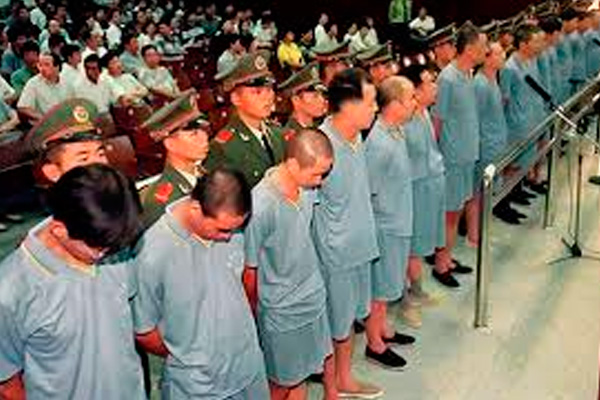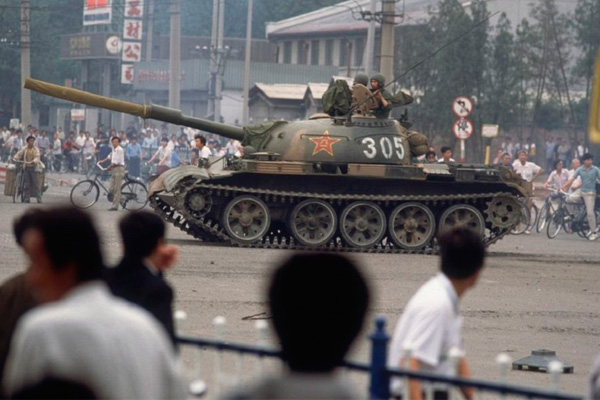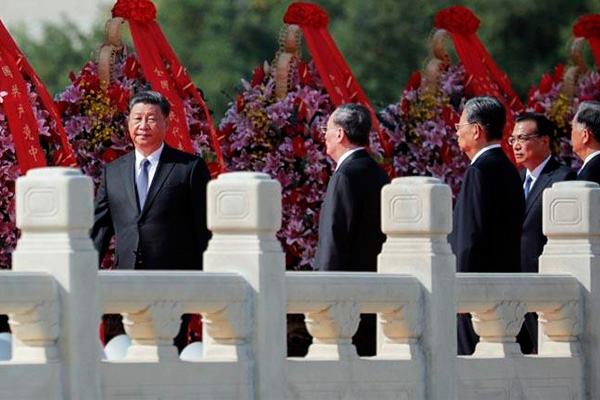Eltitoguay
Well-known member
HISTORY OF THE INTERNATIONALS
The Second International (IV) The foundations are laid for a new world organization :
As we saw in the previous note, the Great War broke out as a result of the internal contradictions of capitalism in its imperialist stage and led the world to a catastrophe of historic magnitude.Jazmín Jiménez; August 1, 2013
Capitalist barbarism and the bankruptcy of the Second International:
As we saw in the previous note, the Great War broke out as a result of the internal contradictions of capitalism in its imperialist stage and led the world to a catastrophe of historic magnitude. The European map became a hellish scenario: famine, cannibalism, epidemics, destruction and millions of dead reflect the dimension of this carnage. As Lenin stated, the war created conditions of suffering far greater than usual for the masses. This means, for example, that in the first month of the war alone the Russian army had 70 thousand dead; the millions of enlisted peasants did not have enough weapons, so the first line fought with rifles and the second waited with wooden weapons and when the first fell they took up arms and continued the battle; this multitudinous army had only two ambulances at the front; six months after the war began Russia already had one million eight hundred thousand dead.
However, during the first stage of the war, the bourgeoisie had succeeded in making the working class believe that its ills would be solved by defeating the “enemy” country, poisoning it with chauvinist (nationalist) ideas. But not only the masses of workers fell victim to this poison, but also the great majority of their leaders, i.e. the majority of socialist parties, which called for the “defense of the attacked homeland”, thus supporting the bourgeoisies of their countries. Only a minority, including the Bolsheviks, opposed this.
The internationalists regrouped.
The bankruptcy of the Second International, at the most critical and responsible moment, made it essential to begin laying the foundations for a new International that would reorganize the revolutionary socialist movement, since the following years would be “a breeding ground for social revolutions.” In September 1915, the socialists from the different countries that were opposed to the war met in Zimmerwald, a village in Switzerland. Trotsky recounts in his biography: “We squeezed ourselves into four cars as best we could and took the road to the mountains. People stood looking at this strange caravan with a look of curiosity. We were not amused either by the fact that, fifty years after the founding of the First International, all the internationalists in the world could fit into four cars. But there was not the slightest skepticism in that joke. The historical thread breaks all too often. When such a thing happens, there is nothing left but to tie it up again. This was precisely what we were going to do in Zimmerwald.”
At the Conference, which was attended by 38 delegates, it was difficult to agree on a collective manifesto because the participants were divided into two wings. The revolutionary internationalists, headed by Lenin, and the section that refused to break off relations with the social patriots were at odds. Lenin formed the Zimmerwald Left Group with the left internationalists, in which only the Bolsheviks maintained a correct and consistently internationalist position against the war. A manifesto was adopted which described the world war as imperialist, condemned the conduct of the “socialists” who voted for war credits and took part in bourgeois governments, and called on the workers of Europe to develop the struggle against the war and for the establishment of a peace treaty without annexations or contributions.
The Second Conference was held in Kienthal at the end of April 1916. There the left wing was more united and stronger than in Zimmerwald. The manifesto and resolutions adopted in Kienthal were a new step in the development of the international anti-war movement.
Both conferences were a step forward, since they served to bring together the internationalist elements and laid the foundations for a new international; but they did not openly formulate the problem of the struggle against opportunism, they did not adopt a consistently internationalist position and they did not accept the fundamental theses of Lenin's policy, which remained in the minority. There was total agreement on opposing the imperialist war but not on how. The majority position was ambiguous on how the war should be faced, that is, few supported Lenin's revolutionary military policy, which meant the transformation of the imperialist war into a civil war and the defeat of the government itself in the war, as the lesser evil.
From imperialist war to civil war:
The economic, political and social crisis brought on by the war opened up a revolutionary situation (see box) mainly in Europe, as had already begun to be seen in the strikes in various countries, but it was not known for how long and whether this would lead to an immediate revolution. For Lenin, it was necessary to encourage the consciousness and determination of the proletariat and to confront nationalist positions, in order to help it move on to revolutionary actions and to create organizations that correspond to this situation.
The concrete analysis of the situation of the imperialist war of plunder and the moral barbarism to which capitalism was leading in its dispute over the division of the world, allowed Lenin, better than any other Marxist, to understand that, as “war is the continuation of politics by other means”, Lenin maintained that the problem was not which country attacked first, but that: “For decades, almost half a century, the governments and ruling classes of England, France, Germany, Italy, Austria and Russia pursued a policy of plundering their colonies, oppressing other nations and crushing the workers’ movement. And it is precisely this policy, and only this one, that is continuing in the present war.”
At the same time, the class struggle did not end with the imperialist war, but was the extreme prolongation of the contradictions (political, economic and social) of capitalism. Therefore, a proletarian internationalist policy, that is, a revolutionary one, was to transform the imperialist war of the bourgeois nations into a civil war against the bourgeoisie.
Lenin's thinking was opposed to the pacifist "utopia." For him, taking advantage of the mood of indignation of the masses who wanted "peace" was a "duty" of Marxists, but he was also strongly opposed to those who said that the same capitalists who had led the war should be pressured to obtain peace: "They will not deceive the people into believing that, without a revolutionary movement, a peace can be achieved without annexations, without oppression of nations and without plunder, a peace without the seeds of new wars between today's governments and the ruling classes today. Whoever wants a firm and democratic peace must declare himself in favor of civil war against the governments and the bourgeoisie."
In short, Lenin's strategic gamble was proven effective in reality, a year later, with the seizure of power in one of the countries that were part of that war. Therefore, although Zimmerwald and Kienthal were a step forward, the organization of the Third International, as we will see, could only be carried out once the revolutionaries broke with those who wanted to reconcile with the leadership of the Second International and after the triumph of the Russian Revolution.
"A revolutionary situation":
The barbaric conditions brought about by the war and the discontent of the masses opened up a revolutionary situation in Europe. Lenin said: “Those at the top can no longer govern as before; those at the bottom can no longer bear to be oppressed as before; and this double impossibility translates into a sudden effervescence of the masses.”
What are, in general terms, the distinctive symptoms of a revolutionary situation? 1) The existence of a rift, or deep differences within the ruling class, in the face of discontent among the oppressed classes, which he calls a “crisis at the top”; 2) The worsening, more than usual, of the misery and suffering of those “below” and 3) That this generates an increase in the activity of the masses, who, pushed by the crisis, carry out an independent historical action, such as a revolutionary uprising, which questions the power of the ruling class.
But for this revolutionary situation to put a government in check, it will depend on a subjective factor, that is, on "the capacity of the revolutionary class to carry out mass revolutionary actions strong enough to break (or shatter) the old government that will never, not even in times of crisis, 'fall' but is 'made to fall'."
The Russian Revolution of October 1917 (I):

Russian Revolution - Wikipedia
The same war that had created suffering beyond the ordinary also created the conditions for revolution. At the beginning of 1917, as a result of the wear and tear of three years of war, a process of strikes and demonstrations intensified. On International Women's Day, February 23 in the Russian calendar, the female workers of various factories in Petrograd went on strike and were followed by the workers of the Vyborg district, led mainly by the Bolsheviks. The cry of "bread!", constant in those years, was replaced by "down with autocracy!" and "down with the war!", starting the insurrection that would lead to the abdication of the throne, days later, by Tsar Nicholas II (king of the Russian Empire). The strike became general and the Petrograd Soviet was reborn after 12 years, composed of workers' and soldiers' delegates (mostly peasants armed during the war). The revolution quickly spread to Moscow and the rest of Russia.
During this period the Bolsheviks were a small minority in the Soviets, the majority was in the hands of the Socialist Revolutionaries and Mensheviks, parties that sought to reconcile with the bourgeoisie, because they considered that the revolution, due to its tasks, was bourgeois.
In this sense, Trotsky explains that: “These masses not only deny confidence and support to the bourgeoisie, but place it almost on the same level as the nobility and the bureaucracy and place only their weapons at the disposal of the soviets. And the only concern of the socialists, who have made so little effort to put themselves at the head of the soviets, is to know whether the politically isolated bourgeoisie, hated by the masses and hostile to the revolution to the core, will agree to take power.”
While workers, Bolshevik militants and soldiers were guaranteeing the triumph of the insurrection in the streets, two political institutions with very different characteristics would emerge: on the one hand, the provisional government dominated by the bourgeoisie and the landowners, and on the other, the Soviet of Workers' and Soldiers' Deputies of All Russia. In this way, a situation of dual power was created: the provisional government, the organ of the bourgeoisie, and the Soviet, the governing organ of workers, peasants and soldiers. The two powers were irreconcilable, as were the interests of the classes that each represented. However, at this time, the majority in the Soviets was in the hands of two parties, the Social Revolutionaries and the Mensheviks, whose strategy was to subordinate them to bourgeois power, since they sought an alliance with the liberal bourgeoisie. This was the situation that would take place from February to October.
During the first month and a half of the revolution, the war continued despite the masses' demand for "peace." Among the leaders of the Bolshevik Party in Russia, Stalin and Kamenev, there was confusion and disarray. The party, which had just emerged from underground and with its most experienced leaders still in exile, was seized by hesitation; a line of critical support for the Provisional Government was gradually taking hold in the party. It was not until April 3 that Lenin was able to arrive in Petrograd. He had come to change the party's strategy. In his April Theses, he outlined the attitude that socialists should have towards the imperialist war; he stated that the Provisional Government had to be confronted and he made explicit the need to win the majority of the working class and the soviets. For him, the soviets, if they broke with the bourgeoisie, could be not only bodies of workers' self-organization, but "the only possible form of revolutionary government" and the basis for building a new State.
In a next installment we will see how this situation of “dual power” will develop during the following months and how, finally in October, the revolution led by the Bolshevik party finally triumphs.
War and Revolution.
Transform the imperialist war into a civil war:
Opposing all pacifist positions, Lenin maintained that “the people will not be deceived into believing that without a revolutionary movement it is possible to achieve… a peace without the seeds of new wars between governments and the ruling classes… Whoever desires a firm and democratic peace must declare himself in favour of civil war against the governments and the bourgeoisie.” Faced with the bankruptcy of the Second International, Trotsky said as early as 1914 that “the revolutionary epoch will create new forms of organisation… We will dedicate ourselves to this work immediately, amid the roar of machine guns… and the patriotic howling of capitalist jackals… We feel ourselves to be the only creative force of the future… tomorrow millions will rise under our banner who even today, 67 years after the Communist Manifesto, have nothing to lose but their chains.”
Background of the Third International:
Faced with the bankruptcy of the Second International, Trotsky had already said in 1914 that “the revolutionary epoch will create new forms of organisation… We will devote ourselves to this work immediately, amid the roar of machine guns… and the patriotic howling of capitalist jackals… We feel ourselves to be the only creative force of the future… tomorrow millions will rise under our banner who even today, 67 years after the Communist Manifesto, have nothing to lose but their chains.”
The Russian Revolution of October 1917 (II):
Russian Revolution of 1905 had established a dual power: on one side the workers, peasants and soldiers represented in the soviets, on the other the bourgeoisie represented by the provisional government.
But the “dual power” cannot be maintained over time.
The Menshevik and Socialist Revolutionary parties, the majority in the soviets,

Socialist Revolutionary Party - Wikipedia
The policy of Lenin and the Bolsheviks of not placing any confidence in the provisional government began to have an effect on the masses, fed up with a war that the government refused to end.
In July, mass armed demonstrations took place in Petrograd, seeking to hand over “all power to the Soviets.” But they were limited to the capital; in the provinces the situation was not the same, either among the soldiers at the front or among the peasants in the provinces. The premature uprising in Petrograd was in danger of being crushed. The Bolsheviks, aware of the limits of taking power, tried to contain the masses, avoid a premature confrontation, and proposed a peaceful demonstration. They sought to gain time, waiting for the peasants and soldiers to completely go over to the camp of the socialist revolution.
After the defeat of the July Days, the provisional government, aided by false documents, spread the rumour that Lenin was a German spy; they outlawed the Bolshevik Party, arrested Trotsky and other Bolshevik leaders, and Lenin had to go into hiding.
The counterrevolution began to take to the streets.
In August, General Kornilov, emboldened, attempts a coup d'état.
The government, led by the Social Revolutionary Kerensky (he was the leader of this peasant-based party),

Alexander Kerensky - Wikipedia
In mid-September, the soldiers refused to continue the war and an alliance began to form between the Red Guards in the Soviets and the army garrisons (peasants recruited for the war) who demanded the general arming of the workers. The conditions were ripe for taking power, and preparations were carried out in broad daylight, under the helpless gaze of the provisional government, which could only speculate on the date of the insurrection.
Within the leadership of the Bolshevik Party, there were sectors that hesitated and opposed launching the insurrection (Zinoviev and Kamenev), considering that the conditions were not yet met.
Lenin fought fiercely against these sectors and succeeded in winning the support of the majority of the party when, having won the majority in the Petrograd and Moscow Soviets, he said: “Our time has come.” Unlike a coup d'état, where a minority takes power behind the backs of the masses, an insurrection is the culmination of a revolution, made by the masses themselves and led by their most conscious elements. On October 25, the Second All-Russian Congress of Soviets was to be held, and under the pretext of defending the Congress, the plan for the seizure of power was put into action. A Military Revolutionary Committee was created, which, on that day, took over the strategic buildings of the capital, the post and telegraph offices and the main communication routes. The Bolsheviks' planning was such that the Red Guard, led by the Military Revolutionary Committee chaired by Trotsky, encountered little resistance on their way to the Winter Palace, the seat of the provisional government.
The Bolsheviks took power on the eve of the Congress of Soviets, acting in its defense, dissolved the provisional government and established, for the first time in the world, the "dictatorship of the proletariat".

Dictadura del proletariado - Wikipedia, la enciclopedia libre
Dictatorship of the proletariat - Wikipedia
Last edited:









































